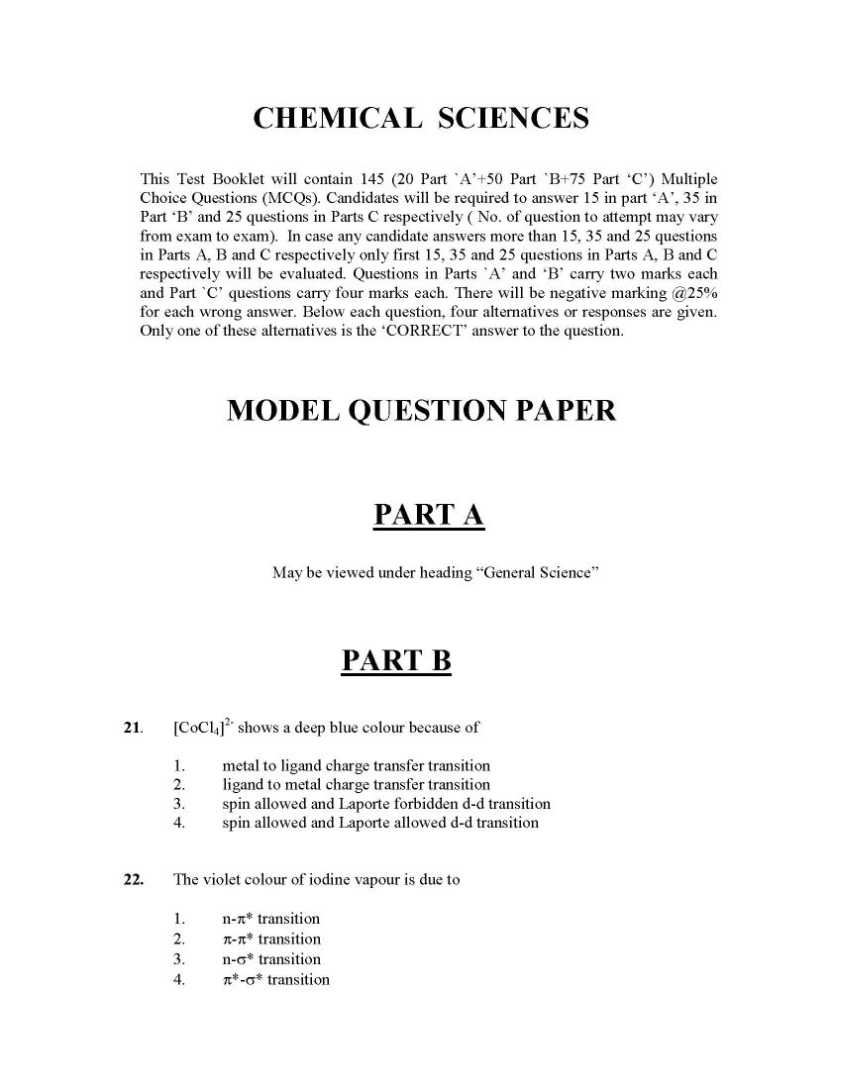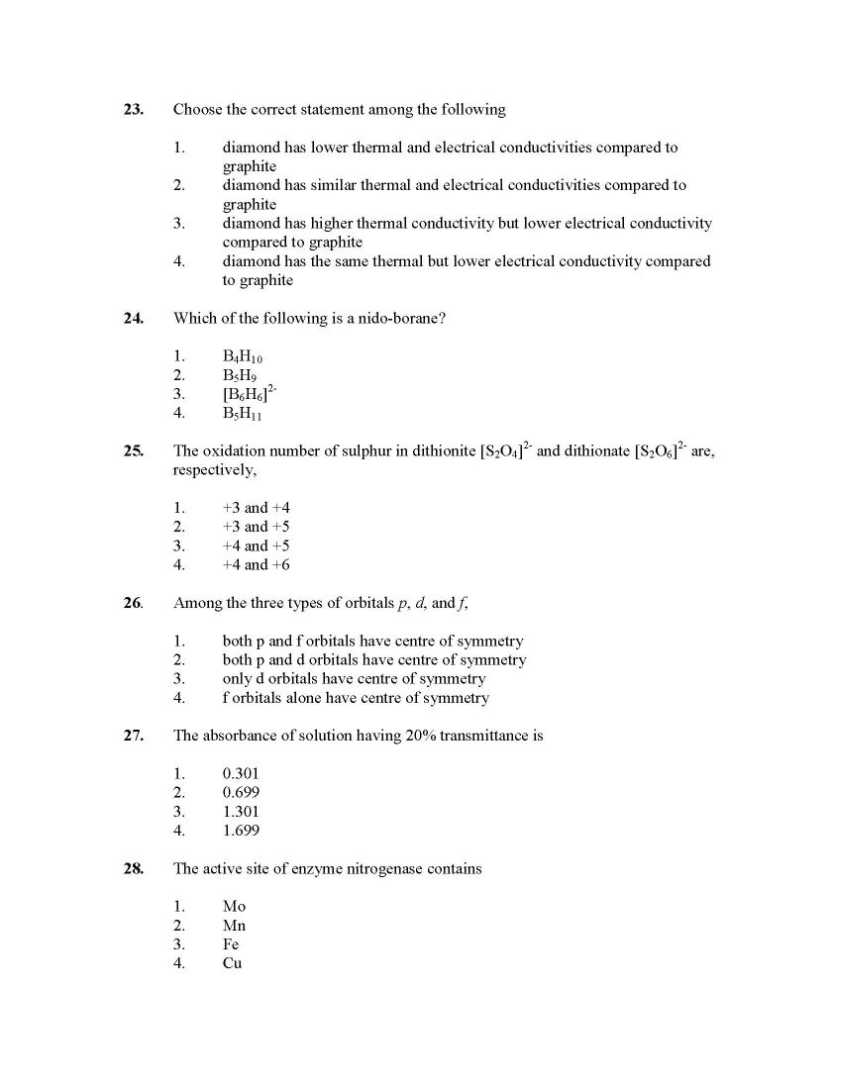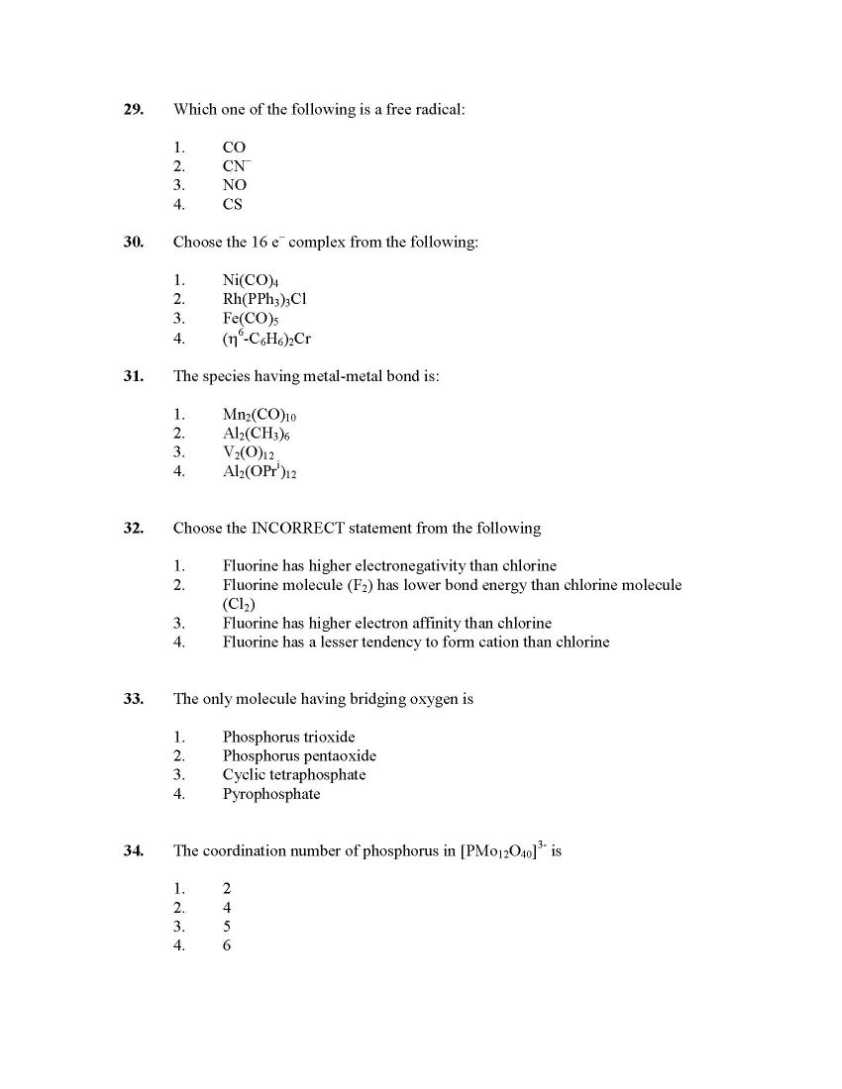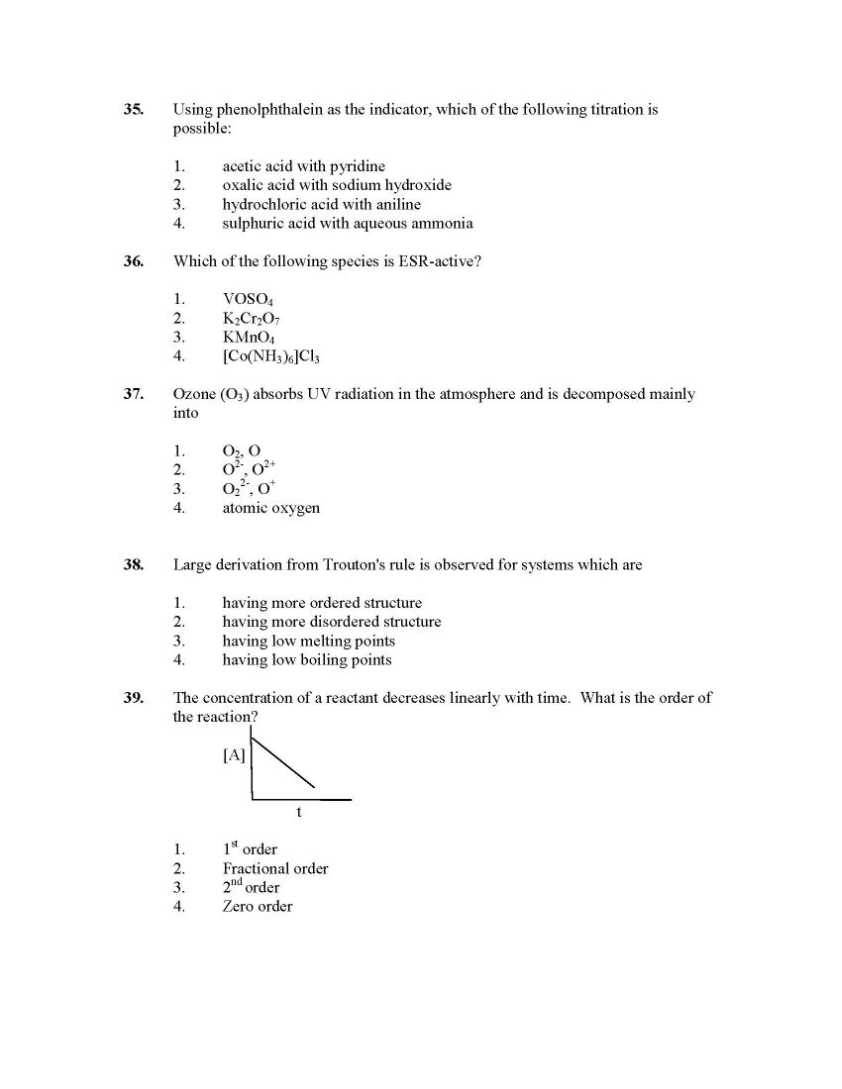|
#2
2nd August 2014, 04:32 PM
| |||
| |||
| Re: CSIR UGC NET exam model question paper
This is the CSIR UGC NET Chemical Sciences exam model question paper: 24. Which of the following is a nido-borane? 1. B4H10 2. B5H9 3. [B6H6]2- 4. B5H11 25. The oxidation number of sulphur in dithionite [S2O4]2- and dithionate [S2O6]2- are, respectively, 1. +3 and +4 2. +3 and +5 3. +4 and +5 4. +4 and +6 26. Among the three types of orbitals p, d, and f, 1. both p and f orbitals have centre of symmetry 2. both p and d orbitals have centre of symmetry 3. only d orbitals have centre of symmetry 4. f orbitals alone have centre of symmetry 27. The absorbance of solution having 20% transmittance is 1. 0.301 2. 0.699 3. 1.301 4. 1.699 28. The active site of enzyme nitrogenase contains 1. Mo 2. Mn 3. Fe 4. Cu     Rests of the questions are in the attachment, download it freely from here: |